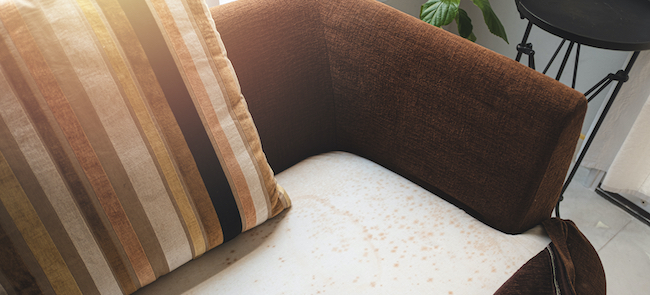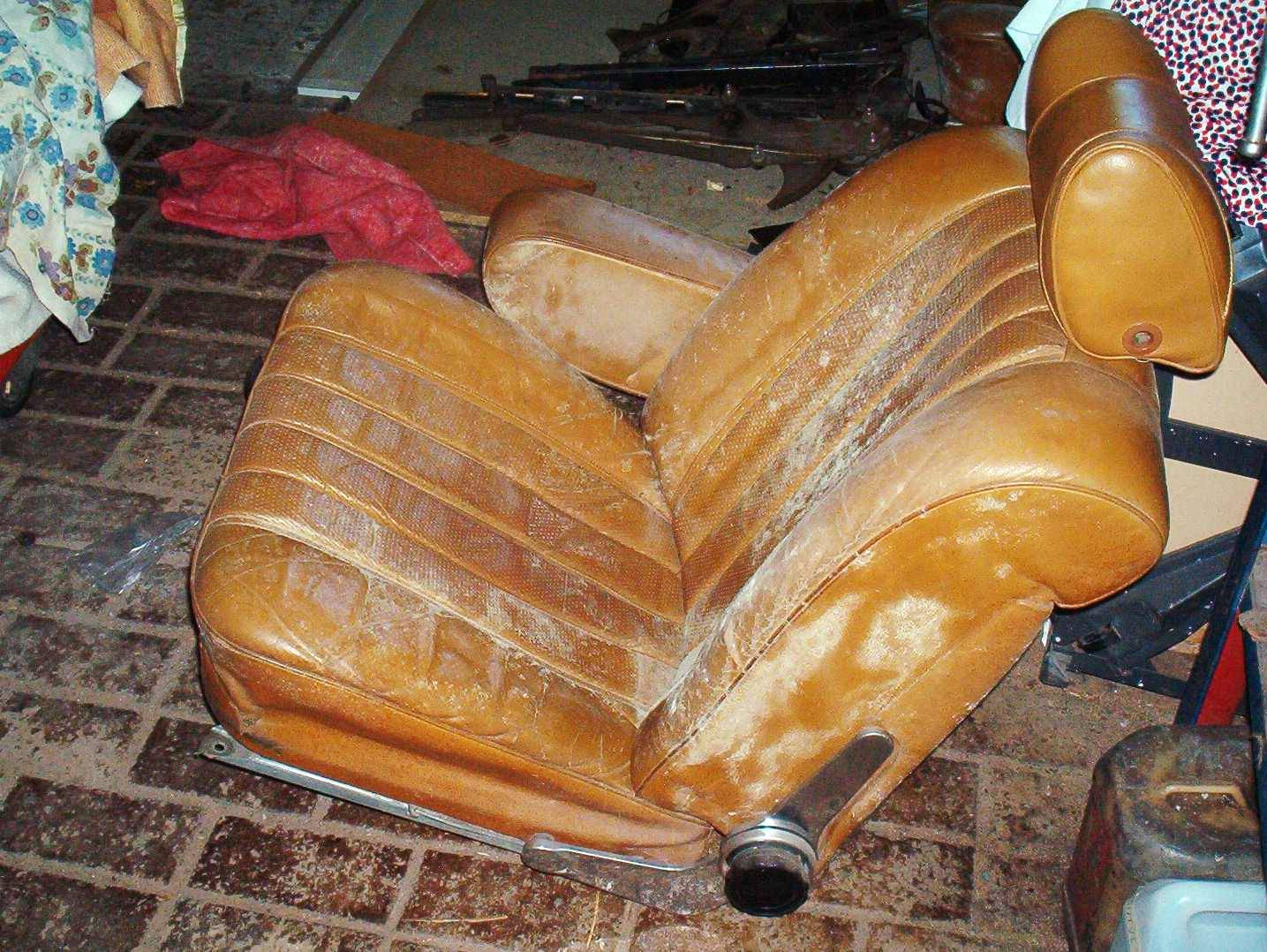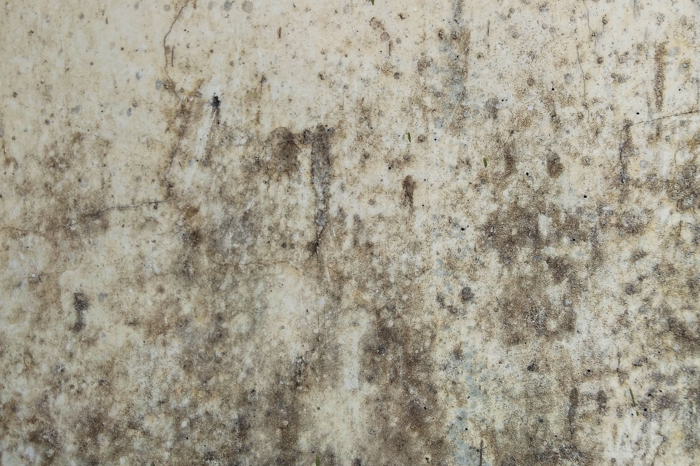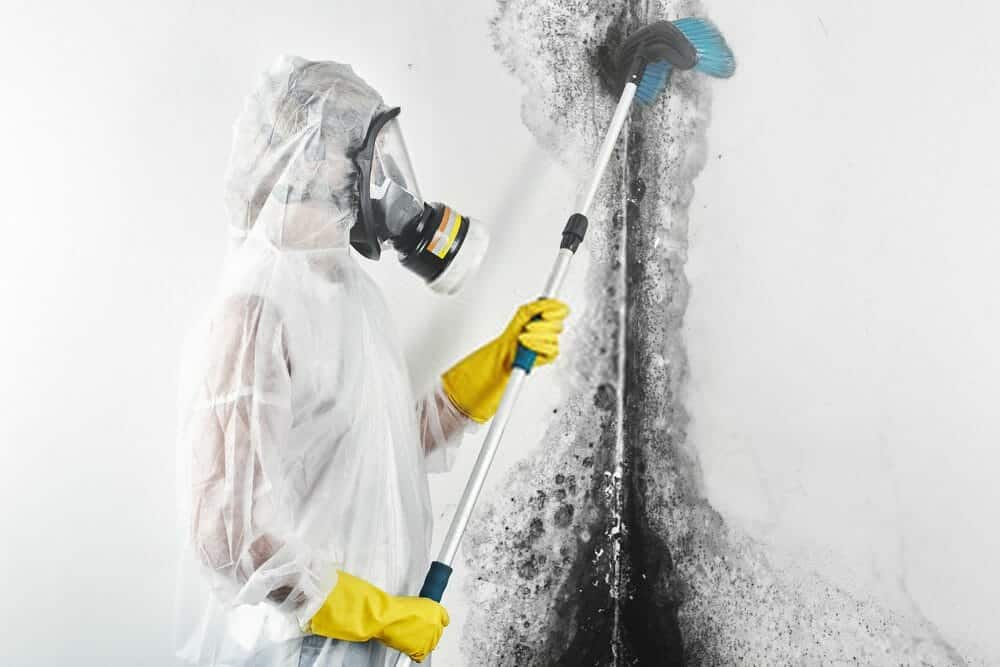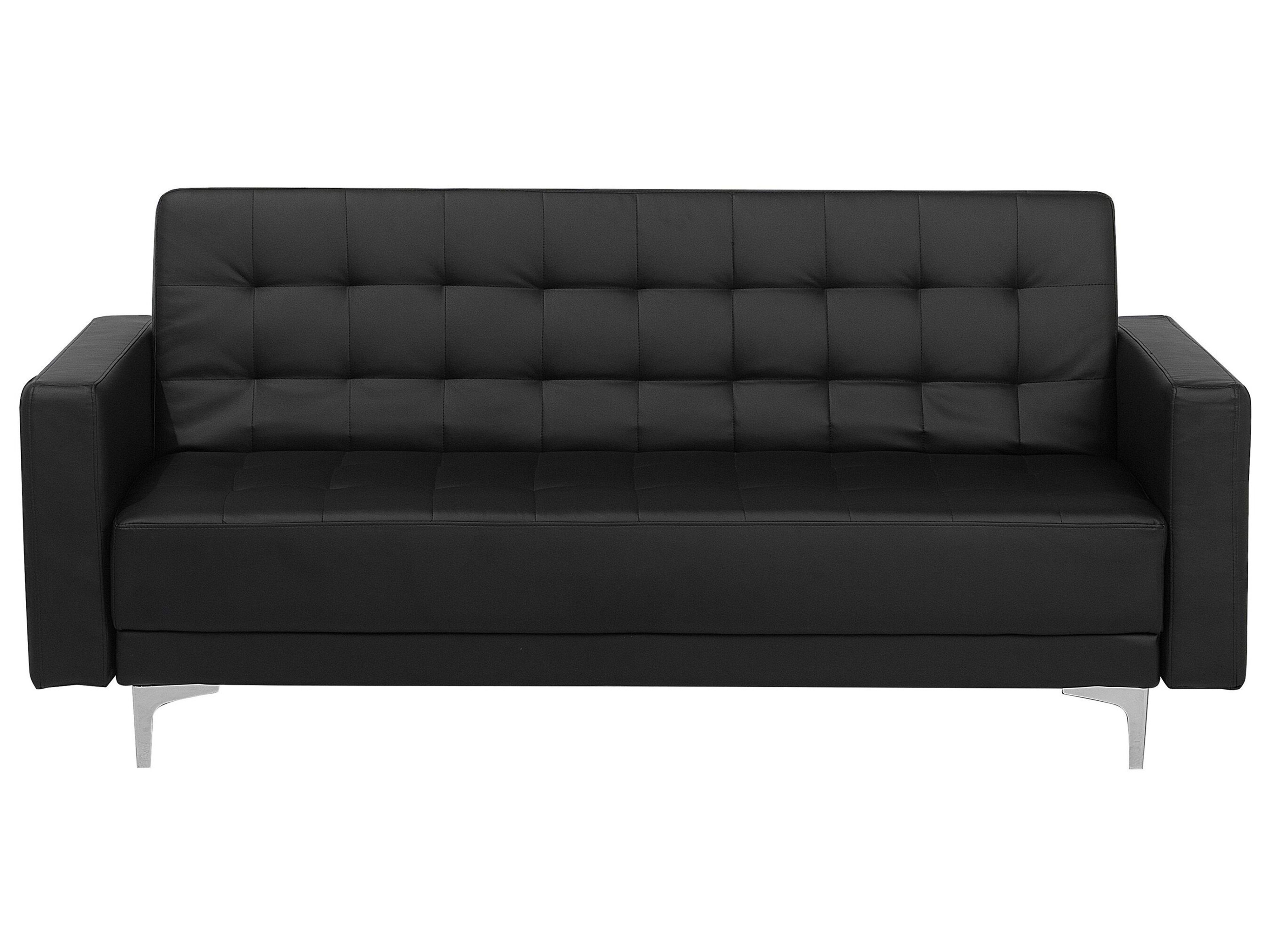Mould growth on a leather sofa can be a frustrating and unsightly problem. Not only can it ruin the appearance of your furniture, but it can also pose health risks for you and your family. If you've noticed mould on your leather sofa, don't panic. There are several effective methods for removing mould and preventing it from coming back. In this article, we'll go over the top 10 ways to remove mould from your leather sofa.Removing Mould from Leather Sofa
Mould can be stubborn and difficult to remove, especially from delicate materials like leather. However, with the right techniques and products, you can effectively get rid of mould on your leather sofa. One simple method is to use a mixture of equal parts water and white vinegar. Apply the solution to the affected area and let it sit for a few minutes before wiping it off with a clean cloth. Repeat this process until the mould is completely gone.How to Remove Mould from Leather Sofa
If the vinegar solution doesn't work, there are other options for removing mould from your leather sofa. You can also use a mixture of water and rubbing alcohol or a commercial leather cleaner. Be sure to test any cleaning solution on a small, inconspicuous area of the sofa first to ensure it doesn't cause any damage. For tougher mould stains, you may need to use a soft-bristled brush to gently scrub the affected area.Effective Ways to Get Rid of Mould on Leather Sofa
If you prefer a more natural approach, there are several DIY methods for removing mould from leather. One effective method is to make a paste using baking soda and water and apply it to the mouldy area. Let it sit for a few hours before wiping it off with a damp cloth. You can also try using tea tree oil, which has antifungal properties, mixed with water to remove mould stains from your leather sofa.DIY Mould Removal for Leather Sofa
If you're not a fan of DIY methods, there are plenty of commercial products available specifically designed for removing mould from leather furniture. Look for products that contain ingredients like hydrogen peroxide or tea tree oil, which are known for their ability to kill mould. Be sure to follow the instructions carefully and test the product on a small area first.Best Products for Removing Mould from Leather Sofa
Once you've successfully removed mould from your leather sofa, it's important to take steps to prevent it from coming back. One way to do this is by keeping your sofa in a well-ventilated area with good air circulation. You can also use a dehumidifier to reduce moisture levels in the room. Regularly wiping down your sofa with a clean, dry cloth can also help prevent mould growth.Preventing Mould Growth on Leather Sofa
If you're dealing with a severe mould infestation or are unsure about how to safely remove it yourself, it may be best to seek professional help. Professional mould removal services have the expertise and specialized equipment to effectively remove mould from your leather sofa without causing damage. This option may be more expensive, but it can save you time and ensure that the mould is completely eradicated.Professional Mould Removal for Leather Sofa
If you prefer to use natural remedies, there are a few options for preventing and removing mould from your leather sofa. One method is to place a bowl of white vinegar near your sofa to absorb excess moisture in the air. You can also use a mixture of water and essential oils, such as tea tree, eucalyptus, or lavender, to spray on your sofa to deter mould growth.Natural Remedies for Mould on Leather Sofa
When tackling mould stains on your leather sofa, it's important to follow a few key steps to ensure successful removal. First, always wear protective gear, such as gloves and a mask, to avoid inhaling mould spores. Next, thoroughly clean the affected area with a mild soap and water. Then, use one of the methods mentioned above to remove the mould. Once the mould is gone, be sure to thoroughly dry the area and condition the leather to prevent it from cracking.Steps to Remove Mould Stains from Leather Sofa
Understanding the common causes of mould growth on leather sofas can help you prevent it from happening in the future. One of the main causes is excess moisture, which can be caused by high humidity levels or spills on the sofa that aren't properly cleaned up. Lack of air circulation and poor ventilation can also contribute to mould growth. Additionally, keeping your leather sofa in a dark, damp area can make it more prone to mould infestations.Common Causes of Mould on Leather Sofa
How to Effectively Remove Mould from Your Leather Sofa

Understanding the Problem: Why Mould Grows on Leather Sofas
 Mould is a common problem in many households, and leather sofas are no exception. Leather is an organic material, which means it is prone to mould growth if not properly maintained. Mould thrives in warm, humid environments and can quickly spread on leather furniture if not addressed promptly. Not only can mould cause unpleasant odors, but it can also damage the leather and compromise its structural integrity. Therefore, it is essential to know how to effectively remove mould from your leather sofa to keep it looking and smelling fresh.
Mould is a common problem in many households, and leather sofas are no exception. Leather is an organic material, which means it is prone to mould growth if not properly maintained. Mould thrives in warm, humid environments and can quickly spread on leather furniture if not addressed promptly. Not only can mould cause unpleasant odors, but it can also damage the leather and compromise its structural integrity. Therefore, it is essential to know how to effectively remove mould from your leather sofa to keep it looking and smelling fresh.
Step 1: Identify the Affected Areas
 The first step in removing mould from your leather sofa is to identify the affected areas. Look for any visible signs of mould, such as green or black spots, on the surface of the leather. It is also crucial to check underneath the cushions and in the crevices of the sofa where mould may be hiding. Once you have identified the areas, mark them with a piece of tape or a marker to ensure you do not miss any spots during the cleaning process.
The first step in removing mould from your leather sofa is to identify the affected areas. Look for any visible signs of mould, such as green or black spots, on the surface of the leather. It is also crucial to check underneath the cushions and in the crevices of the sofa where mould may be hiding. Once you have identified the areas, mark them with a piece of tape or a marker to ensure you do not miss any spots during the cleaning process.
Step 2: Prepare the Cleaning Solution
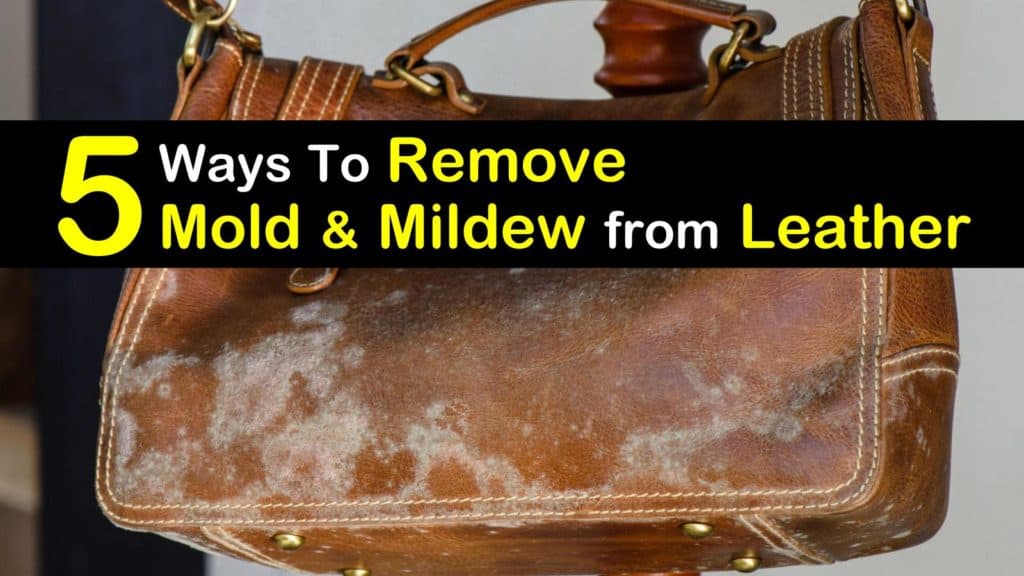 White vinegar
is a highly effective and natural cleaning solution that can remove mould from leather sofas. Mix equal parts of white vinegar and water in a spray bottle and shake well. You can also add a few drops of
tea tree oil
for its antifungal properties. This solution is safe to use on leather and will not cause any damage or discoloration.
White vinegar
is a highly effective and natural cleaning solution that can remove mould from leather sofas. Mix equal parts of white vinegar and water in a spray bottle and shake well. You can also add a few drops of
tea tree oil
for its antifungal properties. This solution is safe to use on leather and will not cause any damage or discoloration.
Step 3: Gently Clean the Affected Areas
 Using a soft cloth or a
soft-bristled brush
, gently scrub the affected areas with the vinegar solution. Be sure to wear gloves and a mask to protect yourself from any mould spores. Avoid using too much pressure, as this can damage the leather. Once the mould has been removed, wipe the area with a clean, damp cloth to remove any residue.
Using a soft cloth or a
soft-bristled brush
, gently scrub the affected areas with the vinegar solution. Be sure to wear gloves and a mask to protect yourself from any mould spores. Avoid using too much pressure, as this can damage the leather. Once the mould has been removed, wipe the area with a clean, damp cloth to remove any residue.
Step 4: Dry and Condition the Leather
 After cleaning, it is essential to dry the leather thoroughly to prevent any future mould growth. Use a clean, dry cloth to blot the leather and remove any excess moisture. You can also use a
leather conditioner
to help restore the leather's natural oils and prevent it from drying out. Apply the conditioner according to the manufacturer's instructions and allow it to dry completely before using the sofa again.
After cleaning, it is essential to dry the leather thoroughly to prevent any future mould growth. Use a clean, dry cloth to blot the leather and remove any excess moisture. You can also use a
leather conditioner
to help restore the leather's natural oils and prevent it from drying out. Apply the conditioner according to the manufacturer's instructions and allow it to dry completely before using the sofa again.
Preventing Future Mould Growth
 To prevent mould from growing on your leather sofa in the future, make sure to keep the room well-ventilated and maintain proper humidity levels. Wipe down your sofa regularly with a clean, damp cloth to remove any dust or debris that may attract mould. You can also use a leather protectant to create a barrier against moisture and prevent mould growth.
Removing mould from your leather sofa may seem like a daunting task, but with the right tools and techniques, it can be done effectively. By following these steps and taking preventative measures, you can keep your leather sofa looking and smelling clean and fresh for years to come.
To prevent mould from growing on your leather sofa in the future, make sure to keep the room well-ventilated and maintain proper humidity levels. Wipe down your sofa regularly with a clean, damp cloth to remove any dust or debris that may attract mould. You can also use a leather protectant to create a barrier against moisture and prevent mould growth.
Removing mould from your leather sofa may seem like a daunting task, but with the right tools and techniques, it can be done effectively. By following these steps and taking preventative measures, you can keep your leather sofa looking and smelling clean and fresh for years to come.













